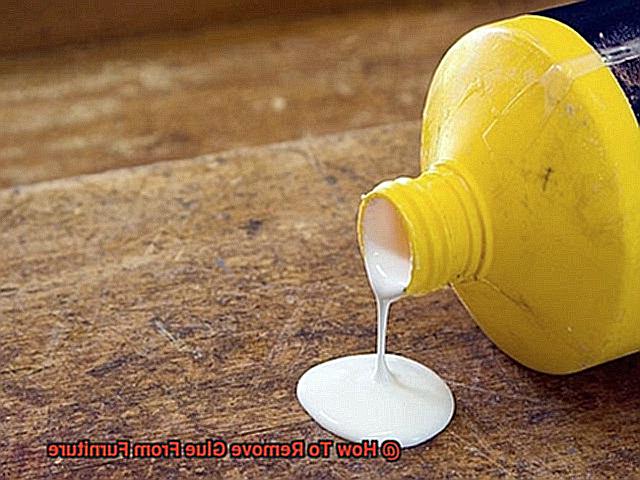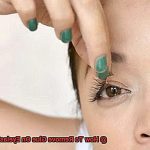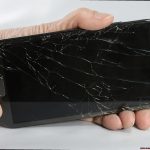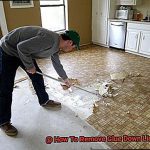Have you ever found yourself staring at a stubborn dried glue stain on your beloved piece of furniture?
It’s a frustrating situation that can leave you feeling helpless and unsure of how to tackle it without causing further damage. But don’t worry.
In this definitive guide, we’ll show you how to remove glue from furniture like a pro, without any harm to the material. First things first, it’s crucial to assess the type of glue and furniture you’re dealing with.
Different materials require different methods for successful removal. For instance, removing glue from a wooden table will differ from removing it from a fabric sofa.
Next up, we’ll explore various home remedies that can help eliminate those pesky glue stains. From vinegar and baking soda to hot water, we’ve got you covered.
And if those don’t do the trick, we’ll also delve into commercial products specifically designed for removing glue from furniture. But that’s not all.
We’ll also share some essential tips and tricks to prevent future glue stains and damage to your furniture. After all, your furniture is an investment that deserves the best care possible to maintain its shine and longevity for years to come.
So, let’s start now.
Understanding the Different Types of Glue and How to Identify Them
Contents
- 1 Understanding the Different Types of Glue and How to Identify Them
- 2 Preparing Your Work Space for Removing Glue from Furniture
- 3 Using Heat to Remove Glue from Furniture
- 4 Using Vinegar to Remove Glue from Furniture
- 5 Using Rubbing Alcohol to Remove Glue from Furniture
- 6 Using Commercial Adhesive Removers to Remove Glue from Furniture
- 7 Conclusion
Glue is a crucial element in furniture construction, but it can turn into a nightmare when it comes to removing it.
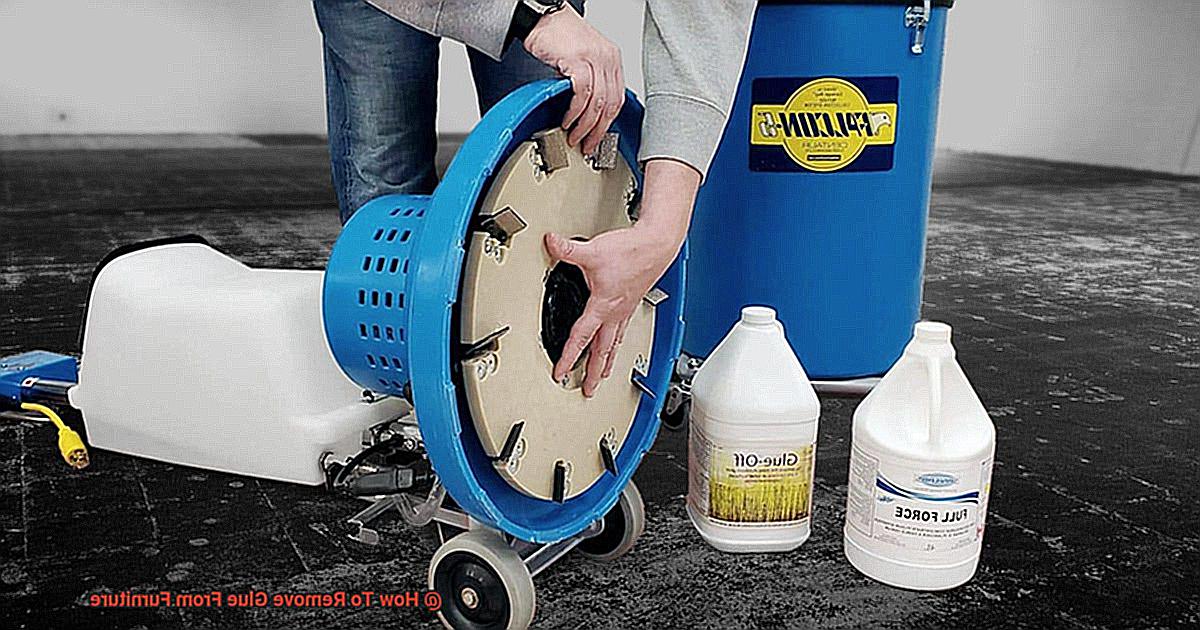
However, with the right tools and techniques, you can easily remove glue from furniture without damaging the surface. Before we dive into the removal process, let’s first understand the different types of glue commonly used in furniture construction.
One of the most common types of glue used in furniture construction is PVA or white/yellow glue. This water-soluble glue dries clear and is popular for woodworking projects.
However, if it’s left to dry for an extended period, it can be challenging to remove without damaging the wood. Another popular type of glue is cyanoacrylate or superglue.
This strong adhesive dries quickly and is ideal for small repairs or bonding metal and plastic surfaces. But be careful, as it’s challenging to remove once it comes into contact with skin or other surfaces unintentionally.
Epoxy glue is also commonly used in furniture construction. This two-part adhesive forms a robust bond that resists moisture and heat, making it a versatile choice for heavy loads.
However, similar to PVA glue, epoxy can be challenging to remove once it has cured. Identifying the type of glue used is crucial in selecting the right removal method.
Using the wrong method can damage the wood or other materials. Now let’s explore some effective methods for removing different types of glue from furniture.
Heat is one of the easiest ways to remove glue from furniture. You can use a hair dryer or a heat gun to soften the glue, making it easier to scrape off gently using a scraper or putty knife.
If you prefer natural cleaning solutions, vinegar is an effective option that can be used to remove glue from furniture. Mix equal parts of white vinegar and water and apply the solution to the affected area.
Allow it to sit for a few minutes before using a scraper or putty knife to remove the softened glue. Rubbing alcohol is also a useful solvent that can be used to remove glue from furniture.
Apply some rubbing alcohol to a clean cloth and rub it onto the affected area. Allow it to sit for a few minutes before using a scraper or putty knife to remove the softened glue.
These products are usually applied directly onto the affected area and left for several minutes before being wiped away with a clean cloth.
Preparing Your Work Space for Removing Glue from Furniture
There are some essential steps you need to follow to prepare your workspace.
Taking these steps will help ensure a clean, organized area to work in, making the process much easier and more efficient. Here’s what you need to do:
First, choose a well-ventilated area. When working with chemicals like adhesive removers, proper ventilation is crucial to avoid inhaling harmful fumes. Opt for an outdoor area if possible or a well-ventilated room with open windows.
Next, cover your work surface with newspaper or an old cloth to protect it from any spills or drips. This will help you keep your workspace tidy and prevent any damage to your work surface. It’s also vital to wear protective gear when working with chemicals.
Make sure to wear gloves and safety goggles to protect your hands and eyes from any chemicals that may splash or spill. Gathering your tools is another important step when preparing your workspace.
Ensure that you have all the necessary tools such as scrapers, sandpaper, adhesive remover, and a clean cloth. Having everything you need readily available will save time and make the process much smoother.
Before starting on the entire piece of furniture, test the adhesive remover on a small, inconspicuous area. This ensures that the adhesive remover won’t damage the surface of your furniture while removing the glue.
Lastly, follow the instructions on the adhesive remover carefully. Different products may require different application methods and waiting times.
Using Heat to Remove Glue from Furniture
Using heat is a fantastic method to remove it.
This effective technique works by softening the glue, making it easier to remove. But, before we dive into how it’s done, let’s go over some crucial safety measures.
First, prepare your workspace like a pro. Select a well-ventilated area and cover your work surface with newspaper or a drop cloth.
To avoid any burns or splinters, wear protective gloves and safety glasses while working with heated glue. Now let’s get started.
For this method, you’ll need a heat source such as a hairdryer or heat gun. Hold the heat source a few inches away from the glued area and apply heat for a few seconds.
It’s essential to move the heat source around the glued area evenly, ensuring you don’t concentrate it in one spot for too long as this could damage your precious furniture. After heating the glue, use a scraper or credit card to gently lift it off the surface.
If the glue proves stubborn, repeat the process several times until it has softened enough to be removed easily.
Using heat on delicate fabrics or plastic materials may cause them to melt or warp. Thus, we recommend testing a small inconspicuous area before attempting to remove glue from furniture.
Remember, patience is key when using this method. Applying too much heat can cause damage to your furniture; hence taking your time and not rushing the process is vital.
Using Vinegar to Remove Glue from Furniture
Vinegar is a natural and non-toxic solution that can rid your furniture of stubborn glue stains. Acetic acid, found in vinegar, is the key ingredient that works to break down the glue and make it easier to remove.
Simply mix equal parts of white vinegar and warm water in a spray bottle, then spray the solution onto the affected area and let it sit for a few minutes. The vinegar will work its magic by loosening the glue, making it easier to scrape off.
When it’s time to remove the glue, use a scraper or putty knife to gently scrape away at the glue. Be sure to proceed with caution as you do not want to damage your furniture.
If the glue proves to be stubborn, repeat the process a few times. After successfully removing as much of the glue as possible, use a clean cloth or sponge with warm water to wipe down the area.
This will eliminate any leftover vinegar and glue residue from your furniture. Using vinegar to remove glue from furniture is an easy and cost-effective solution that can save you time and money.
Using Rubbing Alcohol to Remove Glue from Furniture
There’s a simple solution that can save the day – rubbing alcohol. Rubbing alcohol is an unsung hero in most households that can be used to remove glue from both wood and upholstery.
All you need are some basic supplies – a clean cloth, a bowl, and some rubbing alcohol. It’s like a magic potion against pesky glue stains.
To begin, pour a small amount of rubbing alcohol into the bowl. Dip the cloth into the rubbing alcohol and ensure it’s not too wet.
Then, gently rub the cloth over the glue until it starts to loosen up. Be gentle though, as you don’t want to damage the furniture’s finish or upholstery.
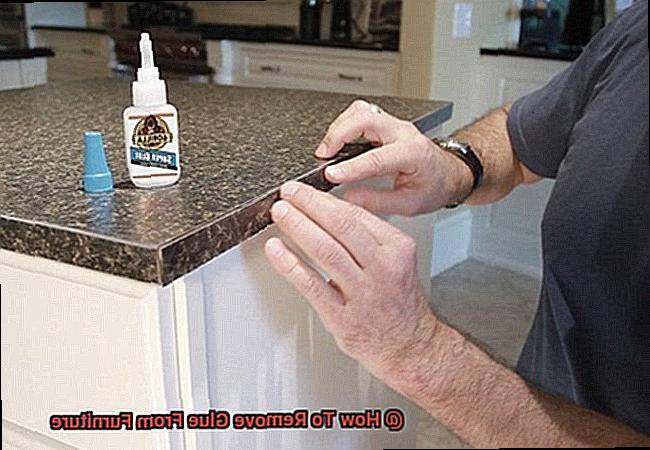
Depending on how much glue there is, you may need to repeat this process several times. But trust us, it’s worth it.
Once the glue has been removed, wipe down the area with a clean, damp cloth to get rid of any leftover residue. Here’s a pro tip: rubbing alcohol can strip away paint or varnish if left on for too long.
So make sure to work quickly and carefully. If you’re unsure about using rubbing alcohol on your furniture, test it in an inconspicuous area first.
Using rubbing alcohol is not only effective but also cost-efficient since most households already have it on hand. Say goodbye to those stubborn glue stains and hello to clean and beautiful furniture.
Simply reach for your trusty rubbing alcohol and follow these easy steps for a quick and easy fix.
Using Commercial Adhesive Removers to Remove Glue from Furniture
Commercial adhesive removers can come to your rescue.
These products are specially formulated to dissolve glue, making it easier to wipe away. However, choosing the right product, reading the instructions carefully, and working safely are all crucial to achieving desired results.
Choosing the Right Product: Not all adhesive removers are created equal, and not all products will work for all types of furniture.
Therefore, it’s essential to ensure that the adhesive remover is safe for the surface of your furniture. For example, some products may be too harsh or damaging for certain types of wood or upholstery.
Always test the product on a small, inconspicuous area first to avoid any irreversible damage. Reading Instructions Carefully:
Before using a commercial adhesive remover, make sure to read the instructions carefully. Following them closely ensures that you use the product effectively and safely.
Pay attention to how long to leave the product on the surface and how to remove it properly. This will prevent any harm to your furniture and ensure that you get optimal results.
Adhesive removers can be harmful if not used correctly.
Hence, take precautions by wearing gloves and working in a well-ventilated area when applying the product. Avoid mixing different types of adhesive removers as this can cause dangerous reactions.
Use a clean cloth or sponge to apply the product and be careful not to scrape too hard or use anything too abrasive. In conclusion, using commercial adhesive removers is an effective way to remove glue from furniture.
7jPr72RmyjM” >
Conclusion
In summary, don’t be intimidated by removing glue from furniture.
With the right tools and techniques, it’s a straightforward process that can be done safely and easily. Start by identifying the type of glue and furniture you’re dealing with, as this will affect your approach.
There are several home remedies available, such as vinegar and baking soda, or commercial products designed to remove glue from furniture. Whichever method you choose, be sure to prepare your workspace carefully.
This means choosing a well-ventilated area, covering your work surface, wearing protective gear, gathering necessary tools, testing adhesive removers on a small area first, and following instructions carefully. Heat is one of the simplest ways to remove glue from furniture.
Vinegar is also an excellent natural solution that won’t harm your furniture or pose any health risks. Rubbing alcohol is another effective solvent that can be used on both wood and upholstery.

